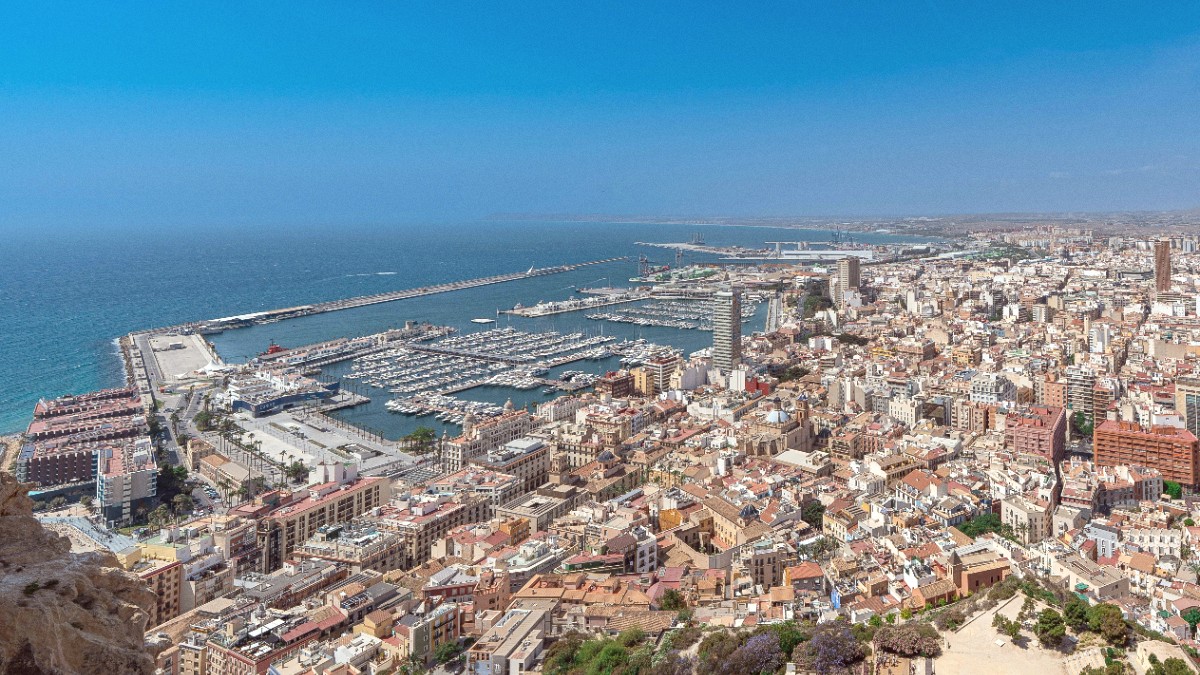
Valencia And Murcia, Spain
The Costa Blanca is served by three main airports, each offering access to different parts of the region. These gateways make arrival convenient for many travelers.
Major European airlines offer frequent flights, connecting the Costa Blanca to numerous European cities. Direct flights from North America to ALC, VLC, or RMU are rare. Most long-haul travelers connect via major European hubs.
The C-6 bus connects directly to Alicante city center. It operates every 20 minutes and costs approximately €3.85.
Taxis are available outside the terminals. A ride to Alicante city center typically costs around €20-€25.
Pre-booked services are widely available. These are a convenience, especially for groups or late arrivals.
Ryanair, EasyJet, Vueling, TUI, British Airways, Lufthansa, KLM, and Air Europa offer frequent flights.
Most long-haul travelers fly into Madrid (MAD) or Barcelona (BCN), then connect via domestic flight or high-speed train.
Frequent connections come from major cities in the UK, Ireland, Germany, and Scandinavian countries.
Spain’s national rail operator, Renfe, offers various train services. High-speed trains (AVE/Alvia/Euromed) connect Alicante (Alicante Terminal station) to major Spanish cities. Regional trains connect Alicante to Murcia, Villena, and other provincial towns.
ALSA is the main national bus company. It offers extensive connections throughout Spain from Alicante and major Costa Blanca towns. You can travel to Madrid, Barcelona, Valencia, Murcia, and many other destinations. Major towns have central bus stations, like the Estación de Autobuses de Alicante.
The minimum driving age in Spain is 18. You must have a valid driving license. EU/EEA licenses are fine. Other licenses may need an International Driving Permit (IDP). Obtain your IDP in your home country before departure. A credit card in the main driver's name for the security deposit is necessary.
Drive on the right-hand side of the road in Spain. Seatbelts are mandatory for all occupants. The speed limit is typically 120 km/h (75 mph) on motorways, 90 km/h (56 mph) on national roads, and 50 km/h (31 mph) in urban areas. Using a handheld mobile phone while driving is illegal.
For some travelers, arriving by sea offers an unique experience, especially from the Balearic Islands. Alicante and Dénia serve as main ferry hubs, connecting to various islands.
Immigration procedures at seaports mirror those at airports. Standard Schengen entry and exit procedures apply for non-EU/EEA citizens. Be ready to present your passport and any required documents. Ports are typically well-connected to local public transport, including buses and taxis.
International Flights: Arrive at the airport 2-3 hours before scheduled departure. Schengen Flights: Arrive 1.5-2 hours before departure.
Spain does not impose specific exit fees or taxes. These costs are usually included in your ticket price.
Online check-in is recommended. Prepare for standard airport security checks and passport control.
Major airports like Alicante-Elche Miguel Hernández Airport offer various facilities for departing travelers. These amenities assist with passing the time before your flight.
Bus and train stations also provide basic amenities for travelers. These facilities ensure a degree of comfort during your waiting period.
This saves time and allows you to proceed directly to security if you have no checked bags.
Have liquids and electronics ready for inspection at security checkpoints.
Non-EU/EEA citizens pass through passport control upon departure. Have your passport and boarding pass ready.
Prepare for your departure from the Costa Blanca to ensure a smooth journey home. Confirm your flight status and have all documents ready.